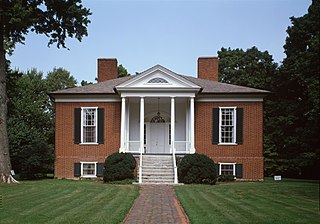
Farmington, an 18-acre (7.3 ha) historic site in Louisville, Kentucky, was once the center of a hemp plantation owned by John and Lucy Speed. The 14-room, Federal-style brick plantation house was possibly based on a design by Thomas Jefferson and has several Jeffersonian architectural features. As many as 64 African Americans were enslaved by the Speed family at Farmington.

The Clearwater Masonic and Grand Army of the Republic Hall is a historic building in Clearwater, Minnesota, United States, constructed in 1888. It has served as a meeting hall for both a local Grand Army of the Republic (GAR) post, and a local Masonic Lodge, with commercial space on the ground floor. It was listed on the National Register of Historic Places in 1979 under the name Clearwater Masonic Lodge–Grand Army of the Republic Hall for having local significance in the themes of architecture and social history. It was nominated for its association with the fraternal organizations of Clearwater and many other rural Wright County communities that, in the words of historian John J. Hackett, "provided leadership, direction, and contributions to the county's political, educational, patriotic, and social life."

The Scranton Cultural Center at the Masonic Temple is a theatre and cultural center in Scranton, Pennsylvania. The Cultural Center's mission statement is "to rejuvenate a national architectural structure as a regional center for arts, education and community activities appealing to all ages." The Cultural Center hosts national Broadway tours; professional and local musical and dramatic theatre offerings; local, regional and national orchestral and popular music, dance and opera; comedians, lecturers, art exhibits, a children's and performing arts academy and various classes as well as fundraiser galas and special events including proms, luncheons, private parties and is a popular wedding ceremony and reception venue. It is listed on the National Register of Historic Places.

The Highland Park Masonic Temple, also known as The Mason Building or The Highlands, is a historic three-story brick building on Figueroa Street in the Highland Park district of northeast Los Angeles, California.

Farmington Historic District is the town center of Farmington, Michigan. It was listed on the National Register of Historic Places in 1976. The area roughly corresponds to the section of Grand River Avenue and Shiawassee Avenue from Warner Street to junction of Grand River and Shiawassee.
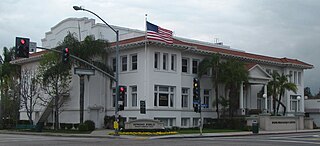
The Spring Field Banquet Center in Fullerton, California is a historic building built in Mission/Spanish Revival style. It was listed in the National Register of Historic Places in 1995. Originally constructed in 1920 as a Masonic meeting hall, the Freemasons sold the building in 1993, due to declining membership and funds. The current owner completely rehabilitated the building in 1995. The building now houses the Spring Field Banquet Center, a commercial banquet hall and reception center.

The Yell Masonic Lodge Hall is a historic Masonic lodge on the west side of United States Route 412 in Carrollton, Arkansas. Also known as Carrollton Masonic Lodge, it is a two-story wood-frame structure measuring about 50 by 35 feet with a front-gable roof, clapboard siding, and a stone foundation. A small belfry rises above the roof, capped by a pyramidal roof. The building was built in 1876, originally serving as a church on the ground floor, and a Masonic meeting hall for Yell Lodge #64 on the second. The building was a major community center for Carrollton, which was the first county seat of Carroll County but declined in importance after it was bypassed by the railroads.
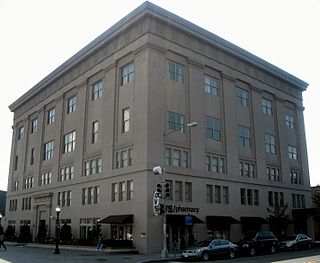
The Prince Hall Masonic Temple built in 1922 is an historic Prince Hall Masonic building located at 1000 U Street, NW in Washington, D.C. It is the headquarters of the Prince Hall Grand Lodge District of Columbia, and houses the MWPGM Roland D. Williams Center for Masonic Excellence. It is part of the Greater U Street Historic District.

The Niles Masonic Temple is a historic Masonic building in Niles, Ohio. It was constructed in 1923 as a meeting hall for a local Masonic lodge, and was listed on the National Register of Historic Places in 2006. In 2009 the Masons moved to new premises, and today the building houses the Genesis Christian Community Center.
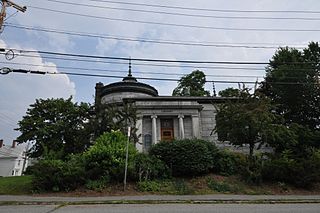
The Cutler Memorial Library building houses the public library of Farmington, Maine. It is located at 117 Academy Street, between the downtown area and the campus of the University of Maine at Farmington. Its building, dedicated to the memory of Nathan Cutler, was built in 1901-03 as the town's first dedicated library building, and was added to the National Register of Historic Places in 1973.

Casselton Commercial Historic District is a 9.3-acre (3.8 ha) historic district in Casselton, North Dakota that was listed on the National Register of Historic Places in 1982.

The Masonic Hall is a historic commercial and fraternal society building at 313-321 Water Street in downtown Augusta, Maine. Built in 1894, it is a significant work of Boston architect John Spofford, and a good local example of restrained Renaissance Revival architecture. It was listed on the National Register of Historic Places in 1986.
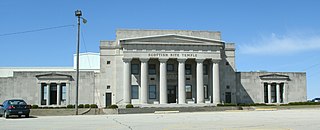
The Cedar Rapids Scottish Rite Temple, also known as the Scottish Rite Masonic Center, is a historic building located at 616 A Avenue, Cedar Rapids, Iowa. It is listed on the National Register of Historic Places (NRHP) as Consistory Building No. 2

The Wisconsin Consistory Building, also known as the Humpfrey Scottish Rite Masonic Center, is a historic structure in Milwaukee, Wisconsin that was built as a Romanesque-style Congregational church in 1889, then bought by a Masonic order and remodeled to an Art Moderne style in 1937. In 1994 it was listed on the National Register of Historic Places.
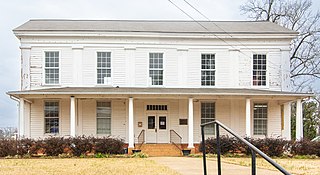
The Old Masonic Hall in Louisville, Mississippi, also known as Community House, and as Chamber of Commerce, is a historic building built in 1851. It was listed on the National Register of Historic Places in 1994 and was designated a Mississippi Landmark in 2007. It is a notable example of Greek Revival style architecture.

Farmington is a house near Charlottesville, in Albemarle County, Virginia, that was greatly expanded by a design by Thomas Jefferson that Jefferson executed while he was President of the United States. The original house was built in the mid-18th century for Francis Jerdone on a 1,753-acre (709 ha) property. Jerdone sold the land and house to George Divers, a friend of Jefferson, in 1785. In 1802, Divers asked Jefferson to design an expansion of the house. The house, since greatly enlarged, is now a clubhouse.

Weld Town Hall is located at 17 School Street in Weld, Maine. Built 1922–26 by the local Masonic Lodge, the build has been a major community center for many years, and has hosted its town meetings since 1925. It is now owned by the town, with space leased to the Masons on the second floor. It was listed on the National Register of Historic Places.

The Courthouse Square Historic District is a national historic district located at Farmington, St. Francois County, Missouri. The district encompasses 26 contributing buildings in the central business district of Farmington. It developed between about 1871 and 1954, and includes representative examples of Greek Revival, Gothic Revival, Late Victorian, Beaux Arts, and Bungalow / American Craftsman style architecture. Located in the district is the separately listed St. Francois County Jail and Sheriff's Residence. Other notable buildings include the St. Francois County Courthouse, Rottger Building, Gierse Tailor Shop, Long Memorial Hall (1924), Methodist Episcopal Church, Masonic Temple, and Fitz Building.


















